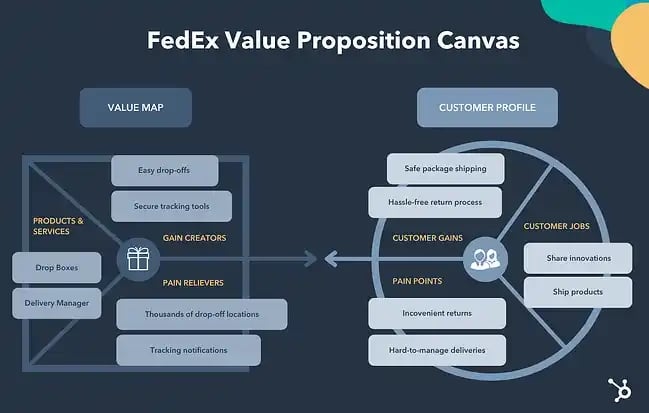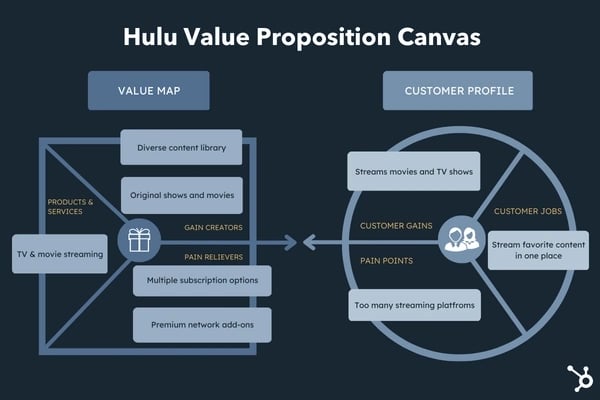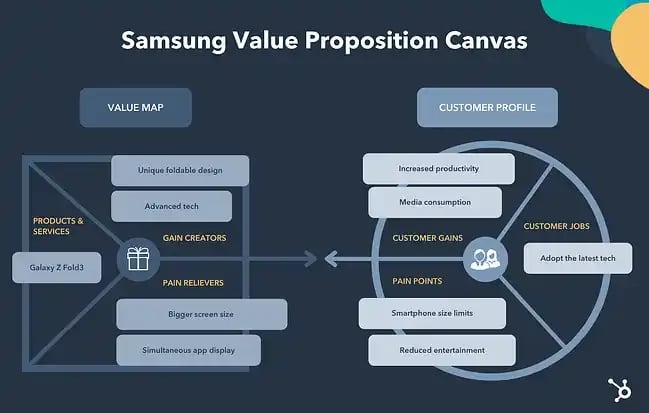Discover the secret formula to crafting a value proposition that captivates your audience and sets you apart from competitors.

Image courtesy of via DALL-E 3
Table of Contents
Welcome, young readers, to a fun and exciting journey into the world of creating a compelling value proposition! In this blog post, we will explore what a value proposition is, why it is important, and how you can create one that stands out. So, let’s dive in and discover the magic of crafting a message that makes people choose you over others.
What is a Value Proposition?
First things first, let’s talk about what a value proposition actually means. Simply put, a value proposition is a statement that explains why someone should choose your product or service over others. It highlights the unique benefits and value that you offer to your customers. For example, if you have a lemonade stand and your value proposition is that your lemonade is made with fresh, juicy lemons and just the right amount of sweetness, that would make people want to buy from you!
Why is it Important?
Now, you might be wondering why having a strong value proposition is so important. Well, think of it this way – when you go to a store to buy something, you are bombarded with so many options. How do you decide which one to pick? That’s where a value proposition comes in handy. It helps people understand why your product or service is the best choice for them. It’s like having a superpower that makes you stand out from the crowd!
Understanding Your Audience
When creating a compelling value proposition, one important aspect to consider is understanding your audience. Your audience consists of the people you are trying to reach with your product or service. By knowing their needs and interests, you can tailor your value proposition to resonate with them effectively.
Getting to Know Them
Understanding your audience starts with getting to know them. You can do this by conducting surveys, asking questions, or even observing their behavior. By gathering information about your audience, you can better tailor your value proposition to meet their needs and preferences.
Identifying Their Needs
It’s crucial to identify what your audience needs or wants from a product or service. Common needs that brands often address include convenience, affordability, quality, or even emotional connections. By understanding these needs, you can create a value proposition that addresses them directly, making your offering more appealing to your audience.
Defining Your Unique Value
In the world of business, it’s crucial to understand what makes your product or service stand out from the rest. This unique quality is known as your “unique value,” and recognizing it can help you attract customers and grow your business.
What Makes You Special?
Take a moment to think about what sets your offering apart from others. Maybe you provide exceptional customer service, offer a one-of-a-kind product, or have a unique way of solving a common problem. Identifying these unique traits is the first step in defining your value proposition.
Listing the Benefits
Once you’ve pinpointed what makes you special, it’s time to list the benefits that your audience can enjoy by choosing your product or service. These benefits could include saving time, saving money, or improving their quality of life. By clearly outlining the advantages of your offering, you make it easier for customers to see the value you provide.
Crafting a Clear Message
A clear message is essential in helping your audience understand what makes your product or service special. To craft a clear message, it’s crucial to use simple words and sentences that everyone can easily grasp. Avoid using complex technical jargon that might confuse your audience. Think of it as explaining your value proposition to a friend in the simplest terms possible.

Image courtesy of blog.hubspot.com via Google Images
Being Concise
When crafting your message, it’s important to be concise and get straight to the point. Short and impactful value propositions are more effective in capturing the attention of your audience. By keeping your message brief, you can communicate your unique value in a way that is easy to understand and memorable. Think of taglines like “Just Do It” by Nike or “Think Different” by Apple – they convey a clear message with just a few words.
Using Visuals and Design
When crafting a compelling value proposition, visuals play a vital role in catching your audience’s attention and reinforcing your message. It’s crucial to select images that not only look good but also align with your brand and support the unique value you offer.
Think about the emotions you want to evoke in your audience and choose images that reflect that. For example, if your value proposition is about trust and reliability, images of happy customers or trustworthy symbols like handshakes can be effective.
Additionally, ensure the quality of your images is high to maintain a professional appearance. Blurry or pixelated images can detract from your message, so always opt for clear and crisp visuals that enhance your proposition.
Designing for Clarity
In addition to visuals, the overall design of your value proposition can greatly impact its effectiveness. A cluttered or confusing layout can make it difficult for your audience to understand the value you’re offering.
Consider design principles such as spacing, font choice, and color coordination to create a visually appealing and easy-to-read proposition. Use a clean layout with ample white space to draw attention to the most important elements of your message.
Remember, simplicity is key when it comes to design. Avoid using too many different fonts or colors that may distract from your main message. Keep it clean, clear, and concise to ensure that your value proposition is easily digestible for your audience.
Testing Your Value Proposition
Once you have crafted your value proposition, it’s crucial to gather feedback from your audience to understand how it resonates with them. One way to do this is through focus groups, where you can present your proposition to a small sample of your target market and observe their reactions. You can also utilize social media polls or surveys to gather opinions from a wider audience.

Image courtesy of blog.hubspot.com via Google Images
Making Improvements
Feedback is valuable only if you use it to make improvements to your value proposition. Take note of the suggestions or criticisms you receive and consider how you can incorporate them to enhance your message. By making continuous iterations based on feedback, you can refine your proposition and make it more compelling to your audience.
Real-Life Examples
Let’s take a look at Apple, a popular brand known for its innovative products. Apple’s value proposition revolves around sleek design, user-friendly interfaces, and seamless integration across devices. By highlighting these key elements in their messaging, Apple sets itself apart from competitors and appeals to customers who value simplicity and cutting-edge technology.
Example from a Smaller Business
Now, consider a small online bookstore called Bookworm Heaven. Despite facing stiff competition from larger retailers, Bookworm Heaven thrived by emphasizing personalized customer service and a curated selection of rare books. This unique value proposition not only attracted book lovers looking for a personalized touch but also set the bookstore apart in a crowded market.
Conclusion
In this blog post, we have delved into the world of creating a compelling value proposition. We began by understanding what a value proposition is and why it holds such importance in the business world. By identifying the needs and interests of our target audience, we can tailor our unique value proposition to stand out from the competition.

Image courtesy of blog.hubspot.com via Google Images
Key Takeaways
It is crucial to know your audience inside out to craft a value proposition that resonates with them. By highlighting your unique qualities and listing the benefits you offer, you can communicate your message clearly and effectively. Visuals and design play a significant role in making your value proposition eye-catching and easy to comprehend.
Testing your value proposition with real audiences and continuously gathering feedback will help you refine and improve it over time. By learning from successful real-life examples, you can draw inspiration and apply similar strategies to your own unique value proposition.
Remember, a compelling value proposition is the key to capturing the attention of your audience and differentiating yourself in the market. So, go ahead and craft a value proposition that truly speaks to your target audience and sets you apart from the rest!
Want to turn these SEO insights into real results? Seorocket is an all-in-one AI SEO solution that uses the power of AI to analyze your competition and craft high-ranking content.
Seorocket offers a suite of powerful tools, including a Keyword Researcher to find the most profitable keywords, an AI Writer to generate unique and Google-friendly content, and an Automatic Publisher to schedule and publish your content directly to your website. Plus, you’ll get real-time performance tracking so you can see exactly what’s working and make adjustments as needed.
Stop just reading about SEO – take action with Seorocket and skyrocket your search rankings today. Sign up for a free trial and see the difference Seorocket can make for your website!
FAQs
What if I Can’t Think of Anything Unique?
It’s common to feel stuck when trying to identify what makes your business special, but remember, every business has something unique to offer. One way to discover what sets you apart is to think about the problems your product or service solves for your customers. Reflect on the feedback you’ve received from happy customers or consider your personal strengths and values that you bring to your business. Don’t be afraid to ask for input from colleagues or friends; sometimes an outside perspective can spark new ideas.
How Do I Know If My Value Proposition Is Effective?
Measuring the effectiveness of your value proposition is crucial to ensuring its success. One way to gauge effectiveness is through feedback from your target audience. Conduct surveys, host focus groups, or even monitor social media comments to see how customers are responding to your message. Additionally, pay attention to key business metrics such as customer engagement, conversion rates, and sales. If you see an increase in customer interest or a positive impact on your bottom line, it’s a good sign that your value proposition is resonating with your audience.







